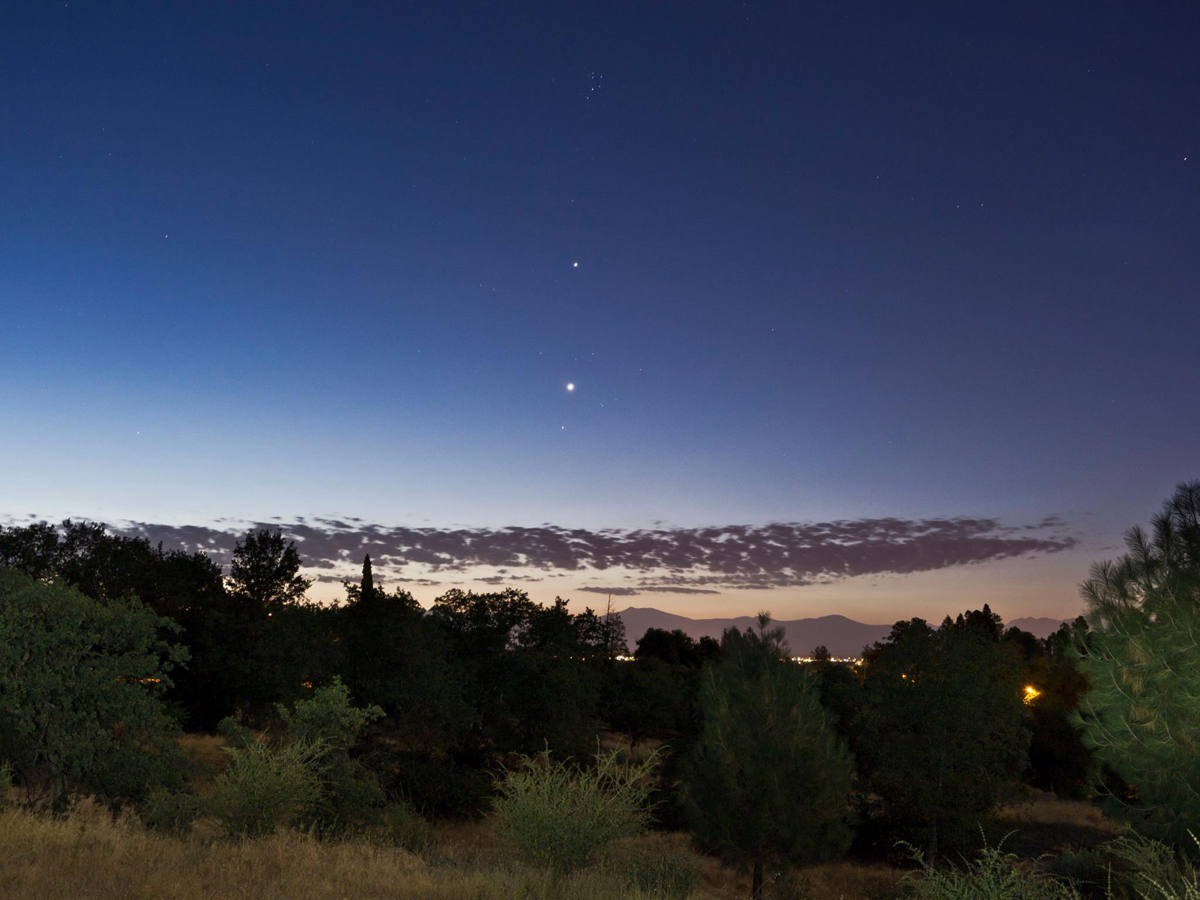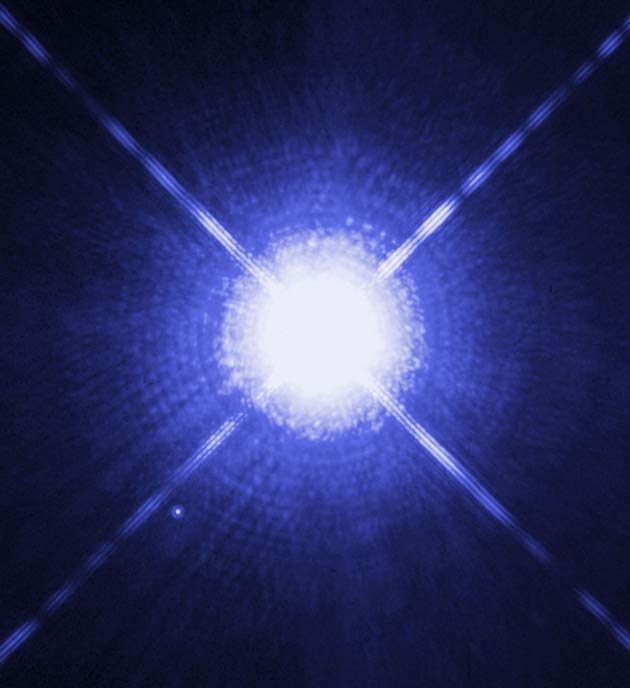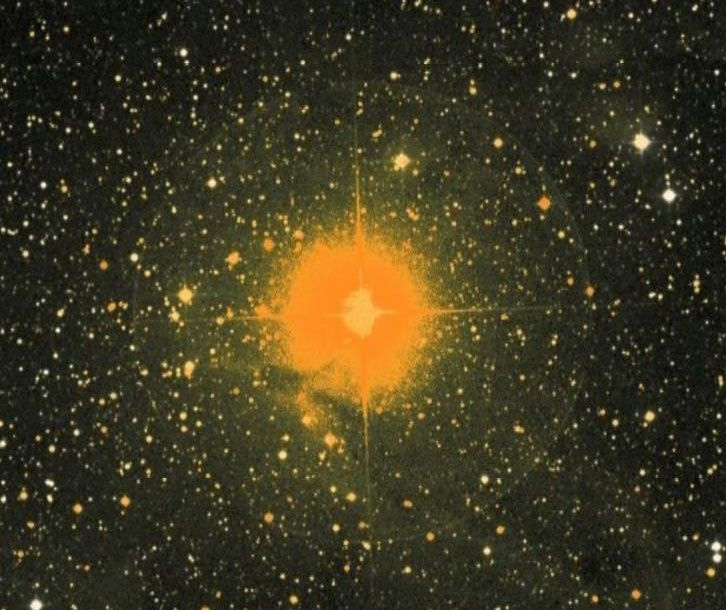The Most Extreme Stargazing Objects in the Night Sky
Extreme Night Sky Targets
The night sky is full of uncountable wonders, as any dedicated stargazer knows. Here's a brief rundown of some of the most extreme night sky sights, from the brightest planet to the most distant object detectable with the naked eye.
Related: Night Sky 2019: What You Can See This Month [Maps]
FIRST STOP: The Brightest Planet
The Brightest Planet
Earth's hellishly hot "sister planet," Venus, takes this title because of its highly reflective clouds and proximity to Earth. It's about six times more luminous than the runners-up, Mars and Jupiter.
Venus is brighter than pretty much any object in our sky apart from the sun and moon, shining at a maximum apparent magnitude of -5 or so. For comparison, the full moon blazes at magnitude -13, making it roughly 1,600 times brighter than Venus. (In astronomy, lower magnitudes signify brighter objects.) [Amazing Photos of Venus and the Moon]
NEXT: The Largest Star
The Largest Star
The largest known star is probably VY Canis Majoris, a red M-type star that lies about 3,800 light-years from Earth in the constellation Canis Major, The Big Dog.
Researchers estimate that VY Canis Majoris could be more than 2,100 times the size of the sun. If placed in our solar system, the monster star's surface would thus extend out past the orbit of Saturn. But VY Canis Majoris may not even have a discernible surface, since the star appears to be about 1,000 times less dense than Earth's atmosphere at sea level.
VY Canis Majoris is the source of considerable controversy, since the estimates of its size fall outside the bounds of current stellar theory. Astronomers think VY Canis Majoris will die in a "hypernova" explosion sometime within the next 100,000 years, producing a burst of energy substantially higher than that generated by typical supernovas.
Breaking space news, the latest updates on rocket launches, skywatching events and more!
NEXT: The Brightest Star
The Brightest Star
In 1997, astronomers using NASA's Hubble Space Telescope identified what may be the most luminous star known — a celestial mammoth 25,000 light-years away that releases up to 10 million times the energy of the sun and is big enough to fill the diameter of Earth's orbit.
Researchers have suggested that this powerhouse star — found in the direction of the constellation Sagittarius — also created a surrounding cloud of glowing gas that has been dubbed the Pistol Nebula. As such, it's called the "Pistol Star."
Unfortunately, this amazing star is not visible to skywatchers here on Earth; it's hidden behind the great dust clouds along the Milky Way. The brightest visible star is currently Sirius, the Dog Star, which is found in the constellation Canis Major. Sirius shines with an apparent magnitude of -1.44. [More on the Pistol Star]
NEXT: Most Colorful Star
The Most Colorful Star
Many stars are known for their beautiful colors, such as the double star Albireo (blue and orange) and Antares (fiery red). But the most colorful of all stars visible to the naked eye may be the reddish-orange Mu Cephei, which is sometimes known as Erakis.
The red giant Mu Cephei — dubbed "The Garnet Star" by famed British astronomer William Herschel — resides in the constellation Cepheus (The King). Mu Cephei is a pulsating variable star and cycles from a maximum magnitude of 3.7 down to about 5.0 before brightening back up again.
And the star's color can vary, too. Most of the time, Mu Cephei appears a deep orange-red, but on occasion it has seemed to take on a weird purplish tint. While The Garnet Star is slightly dim, its ruddy cast is apparent even to the unaided eye on a dark night, and it’s stunning in good binoculars.
NEXT: Most Distant Naked-Eye Object
Most Distant Naked-Eye Object
This superlative goes to the Andromeda galaxy, a collection of 400 billion stars that was spotted as early as the 10th century by Persian astronomer Al Sufi. He described it as a "little cloud."
Even through binoculars or backyard telescopes, Andromeda still looks like little more than an elongated fuzzy patch. But that's still plenty impressive, considering that the galaxy is 2.5 million light-years from Earth.
But it's getting closer. Astronomers estimate that Andromeda and our own Milky Way will merge about four billion years from now, bringing the once-distant galaxy into spectacular view for any skywatchers still around to look up. [Gallery: Andromeda's Crash with Milky Way]

Joe Rao is Space.com's skywatching columnist, as well as a veteran meteorologist and eclipse chaser who also serves as an instructor and guest lecturer at New York's Hayden Planetarium. He writes about astronomy for Natural History magazine, Sky & Telescope and other publications. Joe is an 8-time Emmy-nominated meteorologist who served the Putnam Valley region of New York for over 21 years. You can find him on Twitter and YouTube tracking lunar and solar eclipses, meteor showers and more. To find out Joe's latest project, visit him on Twitter.






